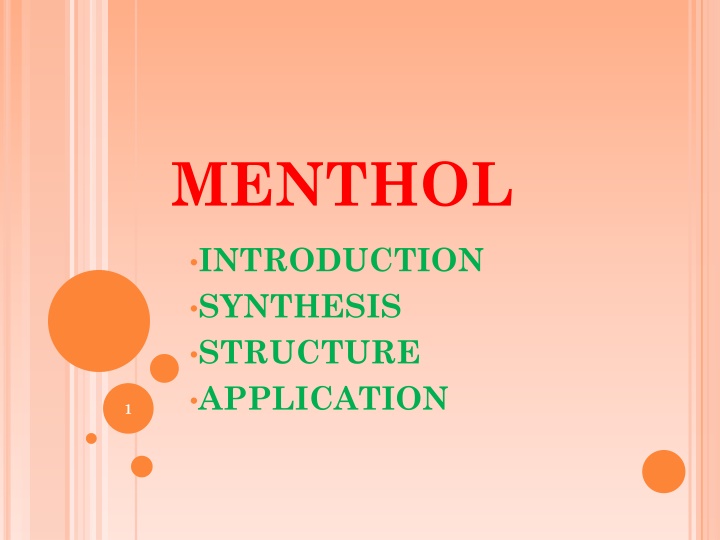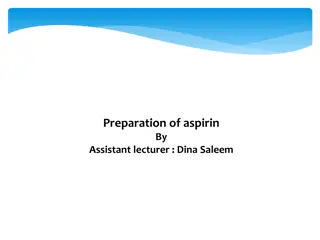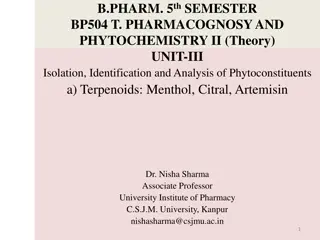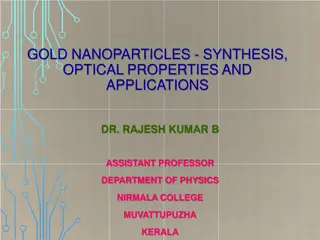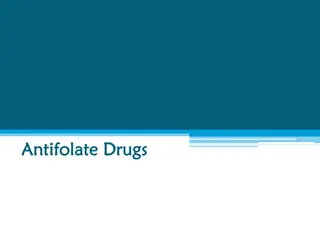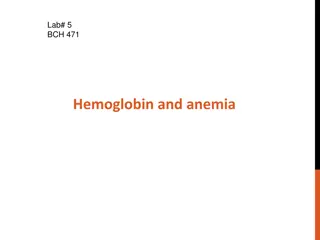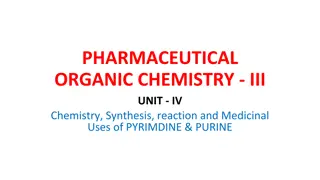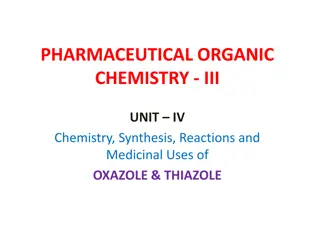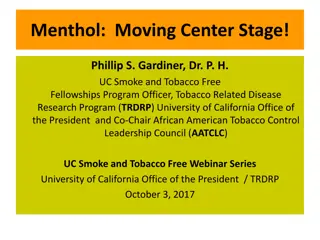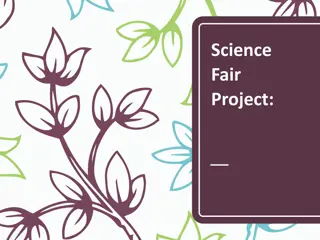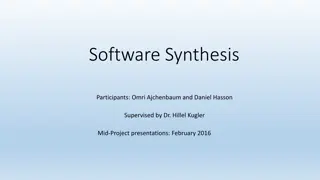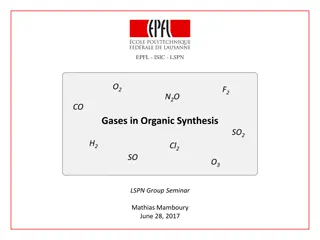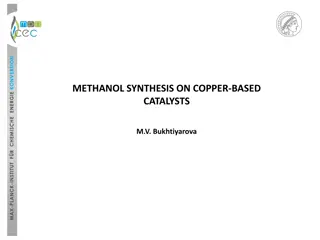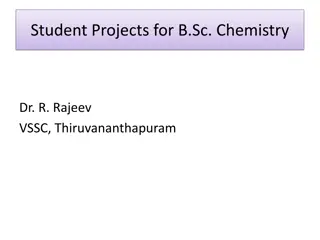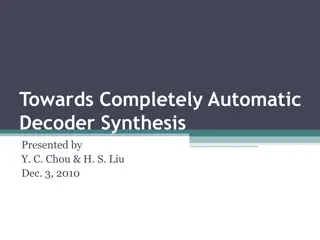Menthol: Synthesis, Structure, and Applications
Menthol is an organic compound found in mint oils, synthesized or derived from cornmint or peppermint. It has a waxy, crystalline form and is solid at room temperature. The biosynthesis of menthol involves several enzymatic steps starting from the terpene limonene. Various enzymes such as geranyl diphosphate synthase, limonene synthase, and isopiperitenone reductase are involved in the process. The final product, menthol, is obtained through a series of reduction and isomerization reactions.
Download Presentation

Please find below an Image/Link to download the presentation.
The content on the website is provided AS IS for your information and personal use only. It may not be sold, licensed, or shared on other websites without obtaining consent from the author.If you encounter any issues during the download, it is possible that the publisher has removed the file from their server.
You are allowed to download the files provided on this website for personal or commercial use, subject to the condition that they are used lawfully. All files are the property of their respective owners.
The content on the website is provided AS IS for your information and personal use only. It may not be sold, licensed, or shared on other websites without obtaining consent from the author.
E N D
Presentation Transcript
MENTHOL INTRODUCTION SYNTHESIS STRUCTURE APPLICATION 1
INTRODUCTION MENTHOL Menthol is an organic compound made synthetically or obtained from the oils of cornmint, Peppermint, or other mints. It is a waxy, crystalline substance, clear or white in color, which is solid at room temperature and melts slightly above. 2
MENTHOL STRUCTURE OF MENTHOL 3
BIO SYNTHESIS OF MENTHOL The Biosynthesis of menthol has been investigated in mentha x piperita and the enzymes involved. It begins with the synthesis of the terpene limonene, followed by hydroxylation, and then several reduction and isomerization steps. The Biosynthesis of (-)- menthol takes place in the secretory gland cells of the peppermint plant. Geranyl diphosphate synthesis (GPPS), first catalyzes the reaction of IPP and DMAPP into 4 geranyl diphosphate.
Next (-)-limonene synthase (LS) catalyzes the cyclization of geranyl diphosphate to (-)- limonene. (-)- Limonene -3-hydroxylase (L30H), using O2 and NADPH, then catalyzes the allylic hydroxylation of (-)- limonene at the 3 position to (-)-trans-isopiperitenol. (-)-trans-isopiperitenol dehydrogenase(IPD) further oxidizes the hydroxyl group on the 3 position using NAD+ to make (-)-isopiperitenone. 6
(-) isopiperitenone reductase (IPR) the n reduces the double bond between carbons 1 and 2 using NADPH to form (+) cis-isopulegone. (+)-Cis-isopulegone isomerase (IPI) then isomerizes the remaining double bond to form (+) - pulegone. (+)-pulegone reductase (PR) then reduces this double bond using NADPH to form (-)-menthone. (-) menthone reductase (MR) then reduces the carbonyl group using NADPH to form (-) 8 Menthol[10].
GPPS = geranyl diphosphate synthase LS = (-)-limonene synthase L3O = (-)-limonene-3-hydroxylase IPD = (-)-trans-isopieritenol dehydrogenase IPR = (-)-isopiperitenone reductase IPL = (+)-Cis-isopulegone isomerase PR = (+)-pulegone reductase MR = (-)-menthone reductase Natural menthol is obtained by freezing peppermint oil. The resultant crystals of menthol are then separated by filtration.
